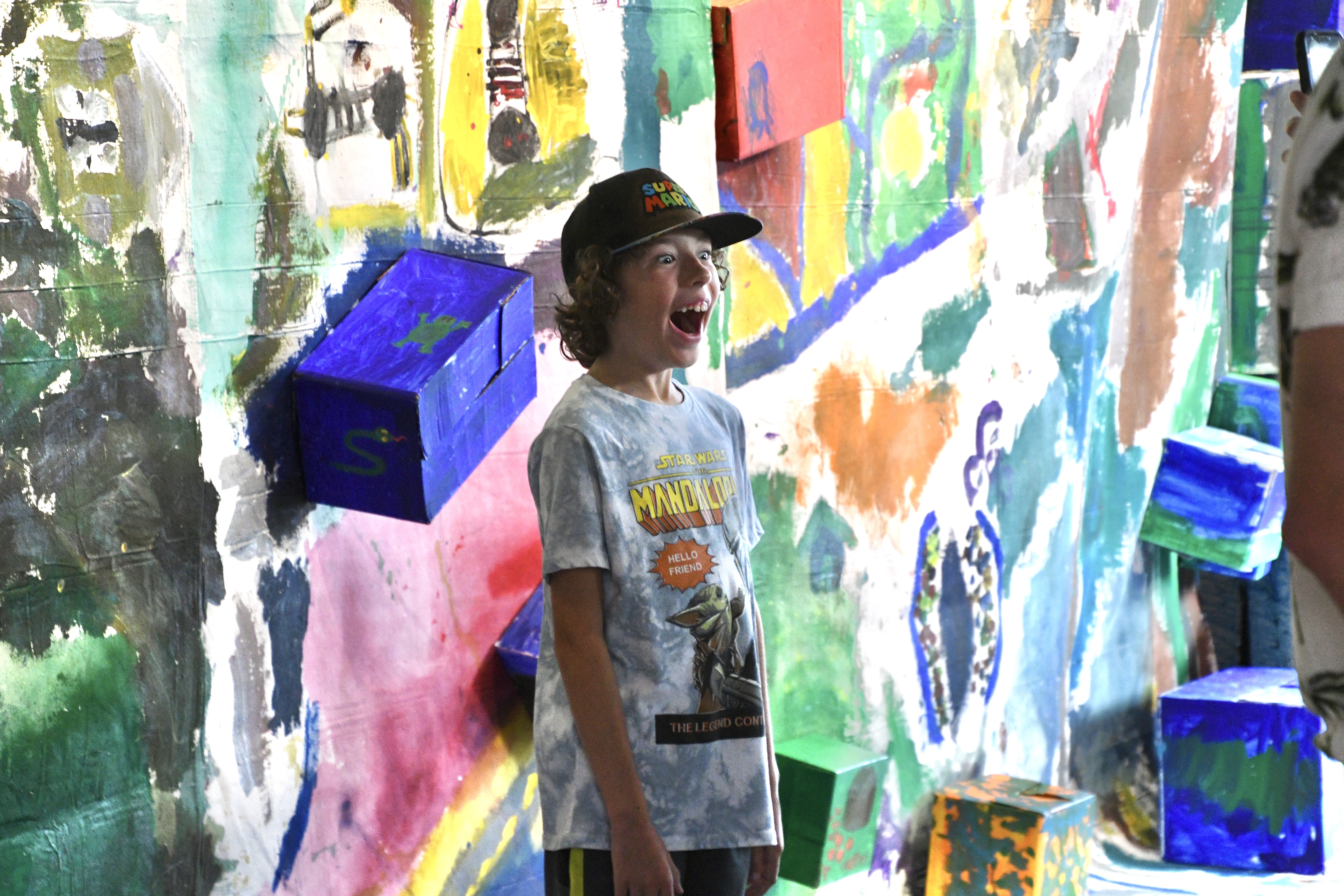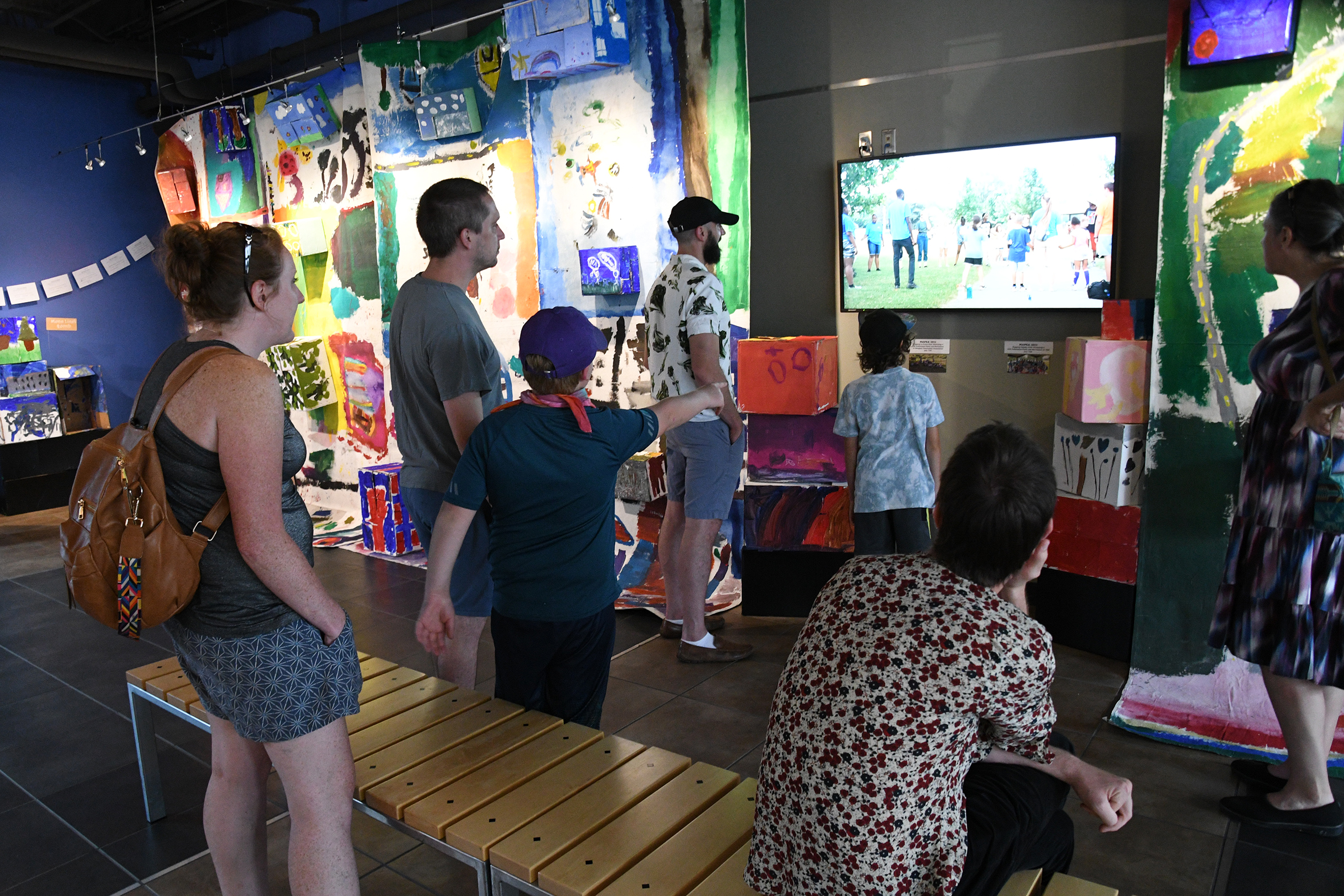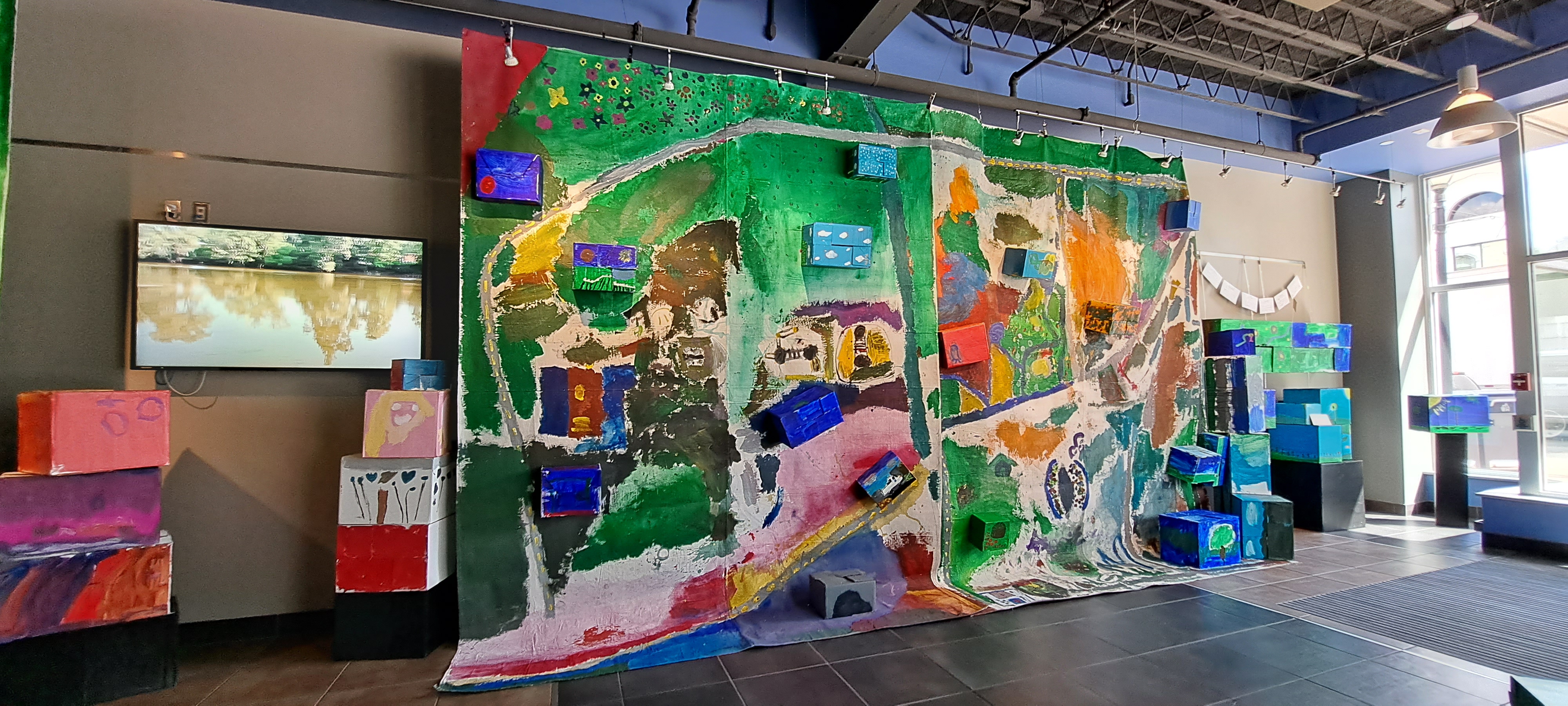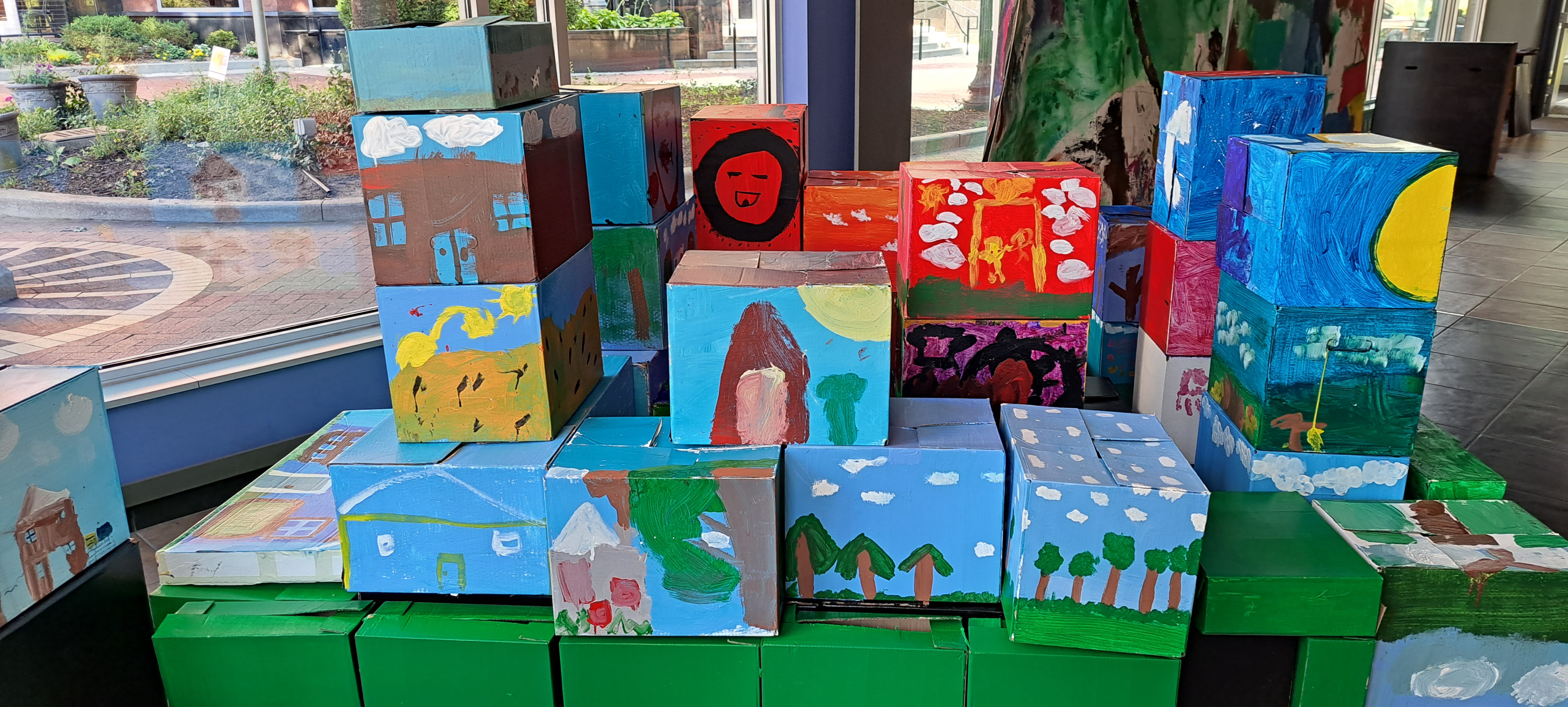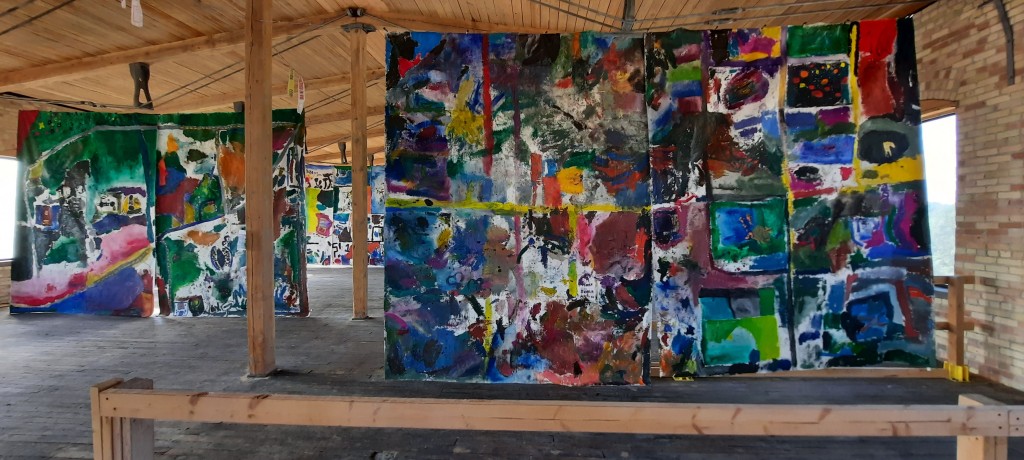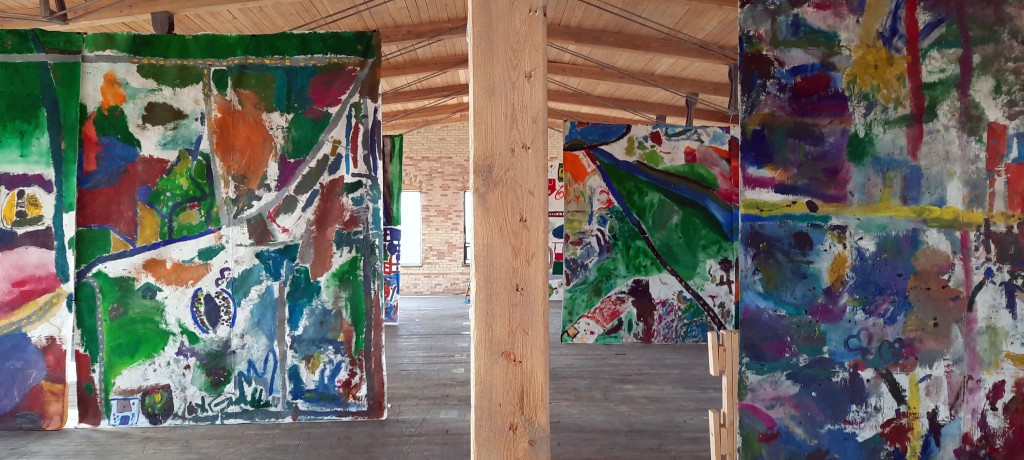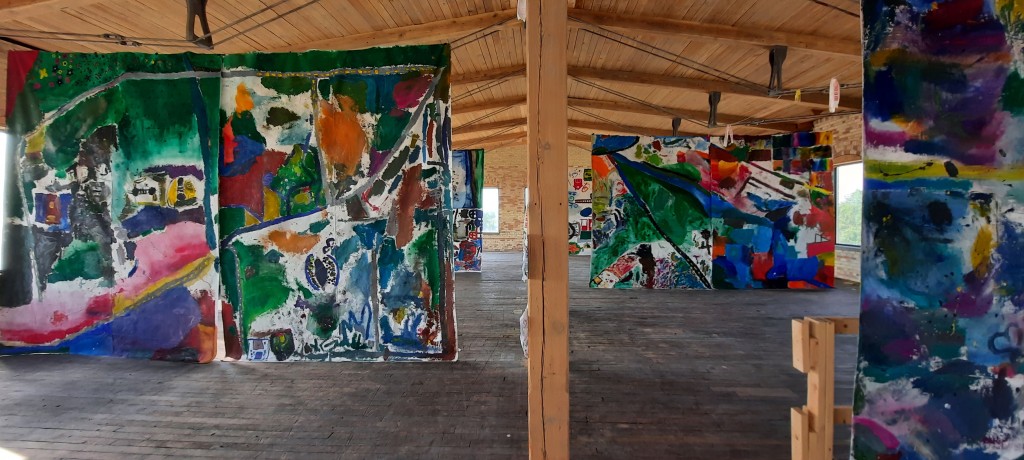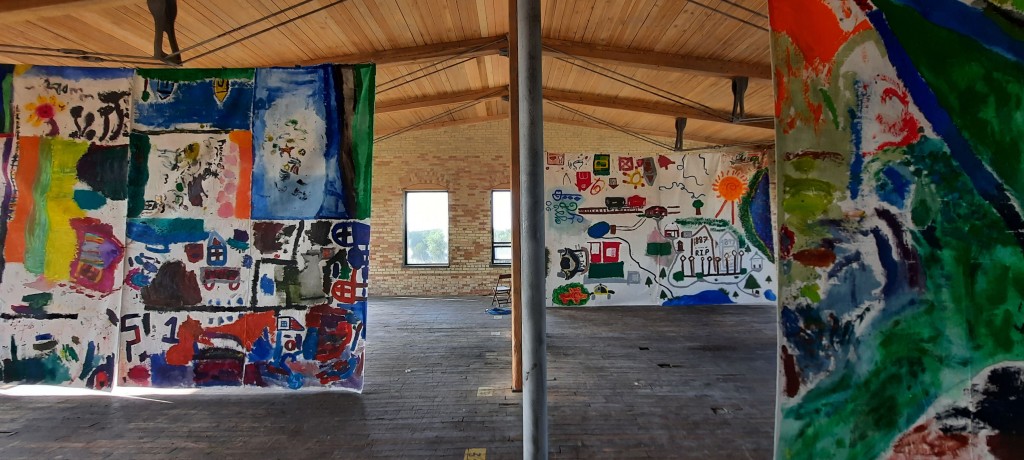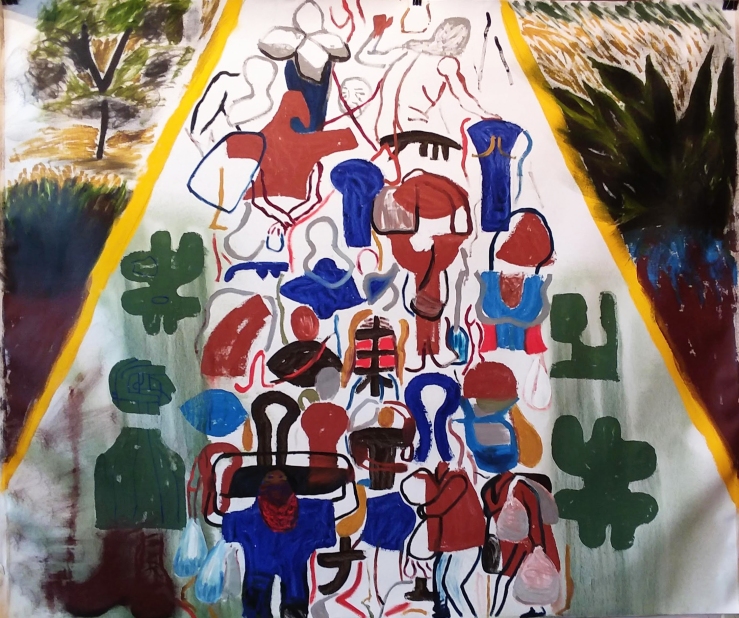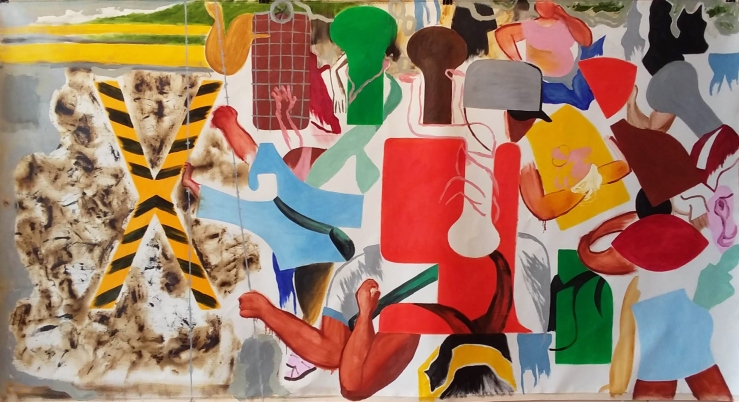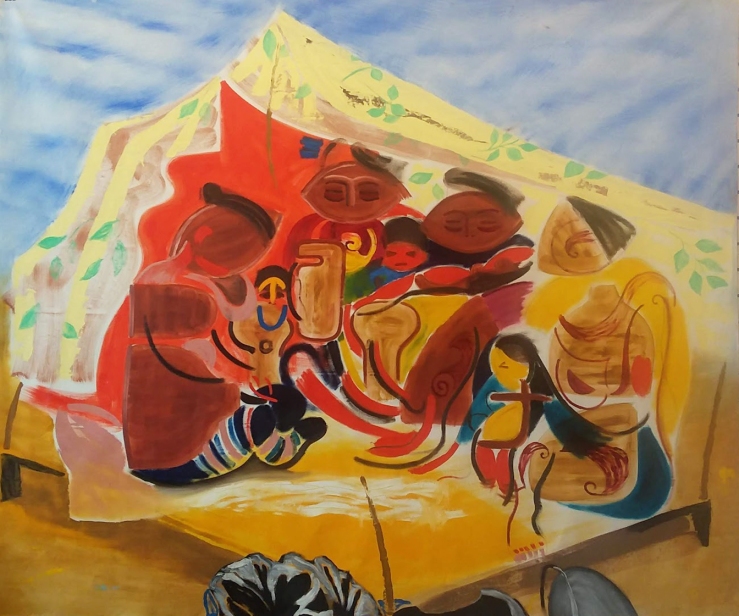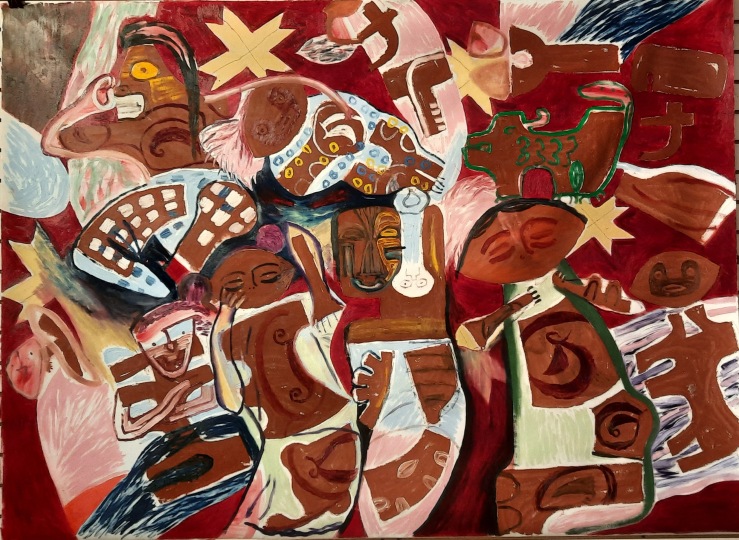A huge thankyou to everyone who made this possible, really appreciate being given a voice….and those shots in the Mill!!
Author: natalyacritchley
MAPEA 2023:InRealLife
This year the MAPEA IRL project in Vicksburg is a change to the way we had been working, which up till now had consisted of looking at our neighborhoods and painting a map of where we live. Still collaborating with Kalamazoo Parks and Recreation Summer Camps, we proposed bringing the workshops to the Mill to explore this big old building with some art in interesting places and a studio space in the basement for the kids to work in. As an experiment in urban renovation and meantime residency for artists, it seemed like too good an opportunity to miss sharing with local kids and youth in our conversation about the environment. But keen as I was to share my passion for old industrial buildings and recycling, you never know if it will be a shared one, especially with such mixed groups of young participants.
Continue reading “MAPEA 2023:InRealLife”This year the MAPEA IRL project in Vicksburg is a change to the way we had been working, which up till now had consisted of looking at our neighborhoods and painting a map of where we live. Still collaborating with Kalamazoo Parks and Recreation Summer Camps, we proposed bringing the workshops to the Mill to explore this big old building with some art in interesting places and a studio space in the basement for the kids to work in. As an experiment in urban renovation and meantime residency for artists, it seemed like too good an opportunity to miss sharing with local kids and youth in our conversation about the environment. But keen as I was to share my passion for old industrial buildings and recycling, you never know if it will be a shared one, especially with such mixed groups of young participants.
Continue reading “MAPEA 2023:InRealLife”MAPEA: a multidisciplinary art mapping project
MAPEA 2022: Mapping Vicksburg and Kalamazoo
How does the color blue move?
What shapes and colors can I find around me?
What does our neighborhood look like?
What do I find when I walk down the road?
What kind of buildings are there? What kind of life?
How do different spaces make me feel?
These were some of the questions we started with in our workshop series this summer.
In 13 workshops across Greater Kalamazoo, we explored different parts of town with kids and youth in summer camps and in classes.
Continue reading “MAPEA 2022: Mapping Vicksburg and Kalamazoo”Bridges not walls
The second showing of my exhibition Mangled Hopes for Bridges continues a process begun through the Destination Venezuela event with the Vicksburg Cultural Arts Center last year (see previous posts) and was now on show for Hispanic Heritage month at the KVCC Arcus Gallery and Center for New Media. I could not have asked for a more suitable showcase in Kalamazoo for my paintings and a chance to discuss the issues in the accompanying webinar (links below).
In the quiet of the pandemic there had been a change in focus, a shift in gaze from landscape and built environment to the people who were now absent from it at least around me. But the steady pedestrian stream over the border from Venezuela to Columbia as documented in Tulio Hernandez journalistic work did not diminish, on the contrary becoming ever more urgent as the pandemic worsened in Venezuela, never leaving my minds eye. As the English art historian Griselda Pollock articulated so perfectly in a podcast I heard while at work, most artists don’t usually know exactly what they want to say, it’s more of a compulsion that moves you to explore a theme visually.
Continue reading “Bridges not walls”MAPEA 2020: Navigating the pandemic
Relocated to Kalamazoo, Michigan since 2016, last year I finally found the collaborators and organisations to work with on a new MAPEA mapping project. Getting to know a community always takes time.
I had just begun to organise a series of workshops for the summer camps held by the Parks and Recreation Department of the City Council when the pandemic hit.
Simultaneously we had been organising another event which had to be postponed straight away (with an exhibition hung and ready to inaugurate) but throughout the year we insisted on looking for ways to continue with our projects.
The MAPEA workshops in particular suddenly seemed all the more urgent exactly because they entail outdoor activities for children who were now forced to stay indoors.
But it did necessitate some adaptation and a lot of uncertainty up until the last minute, so the first expeditions were to take a very long hard look at spaces available and how we could use them, as well as being a great excuse to go out for a bike ride, which became a pandemic favourite for many. The first and nearest site to where I lived was the Upjohn Park, neighbouring Food innovation Center and Parks and Rec Youth Development Center.
Continue reading “MAPEA 2020: Navigating the pandemic”Destination Venezuela:Culture amidst Crises
Vicksburg Cultural Arts Centre, September/October 2020
How the arts thrive and flourish in spite of the pandemic and many uphill circumstances
Mangled hopes for bridges is the name of my exhibition and the painting above. They came in response to the reporting we were translating for our Destination Venezuela event that we’d been working on since the end of last year. Specifically from the work of Tulio Hernández in the Centre for the Memory of the Venezuelan Migration, an initiative he established in Bogota when he had to flee the country a few years ago. We left not long after, glad to have visas and jobs, but the recent migration over the last couple of years has been on foot giving rise to the most surreal and painful images especially across the long border shared with Colombia.
With the onset of the pandemic and ensuing quarantine the event had to be postponed at the last minute even though the exhibition was already up but we were glad to finally open a reformulated version in September, a brief respite in the uncertainty of the pandemic but all the more appreciated for that.

The Short Walk: Episode 3
The Short Walk: episode 2
The Short Walk
From the Mill at Vicksburg

